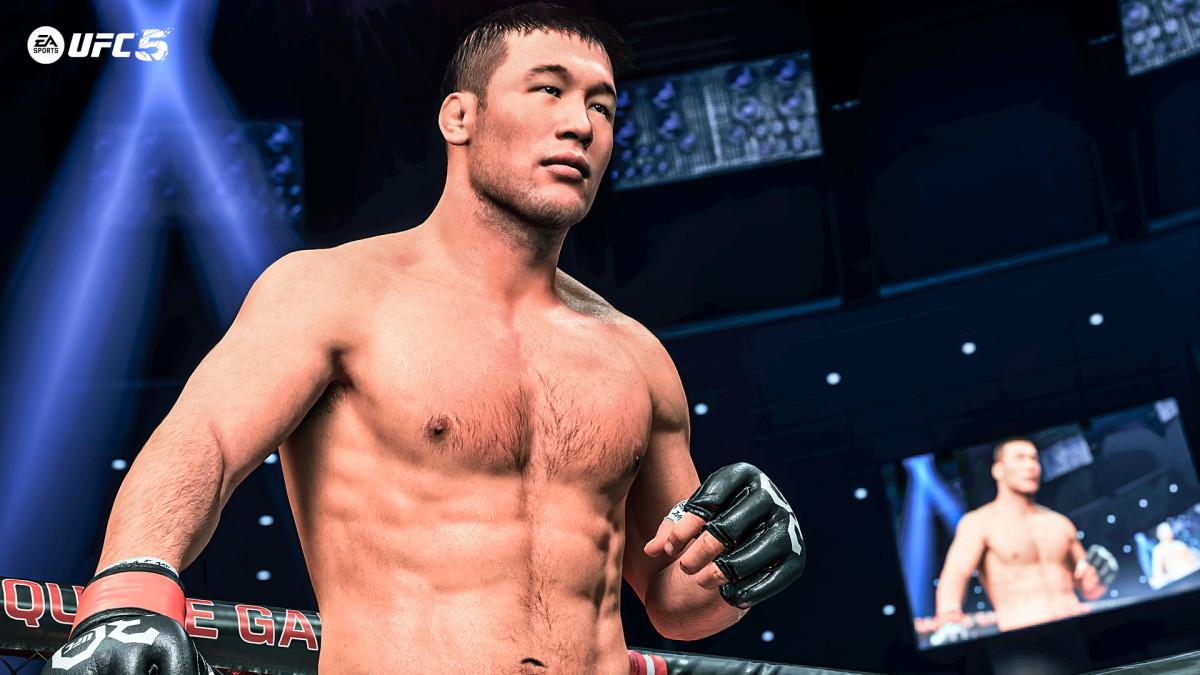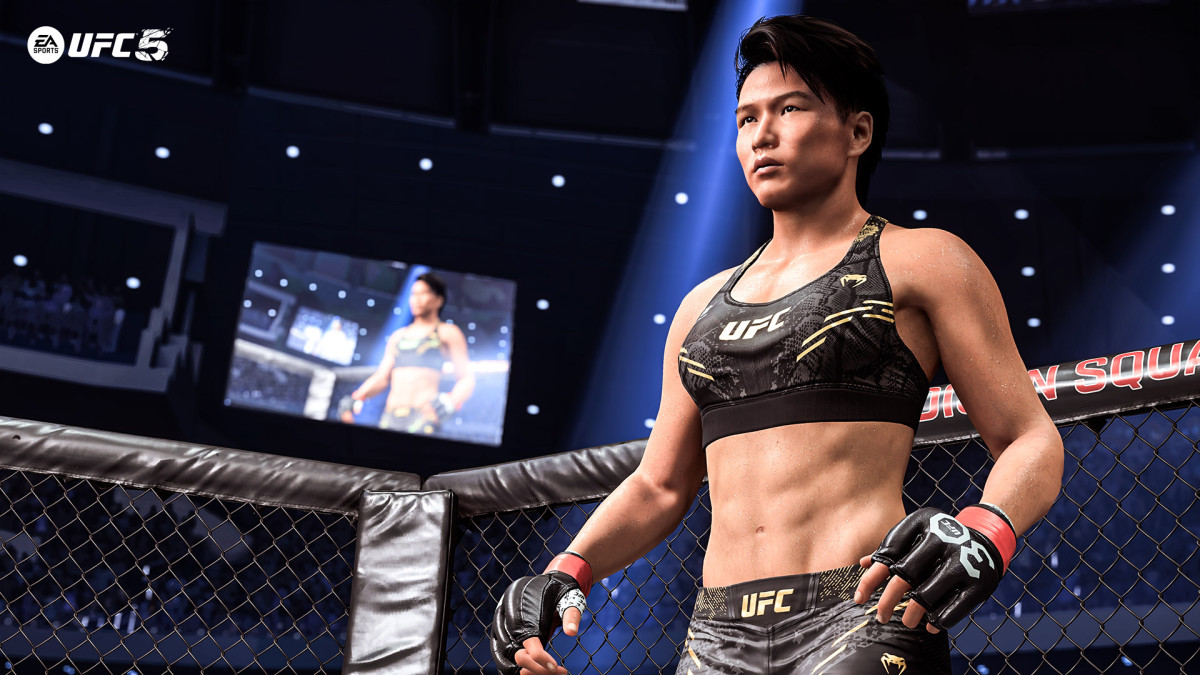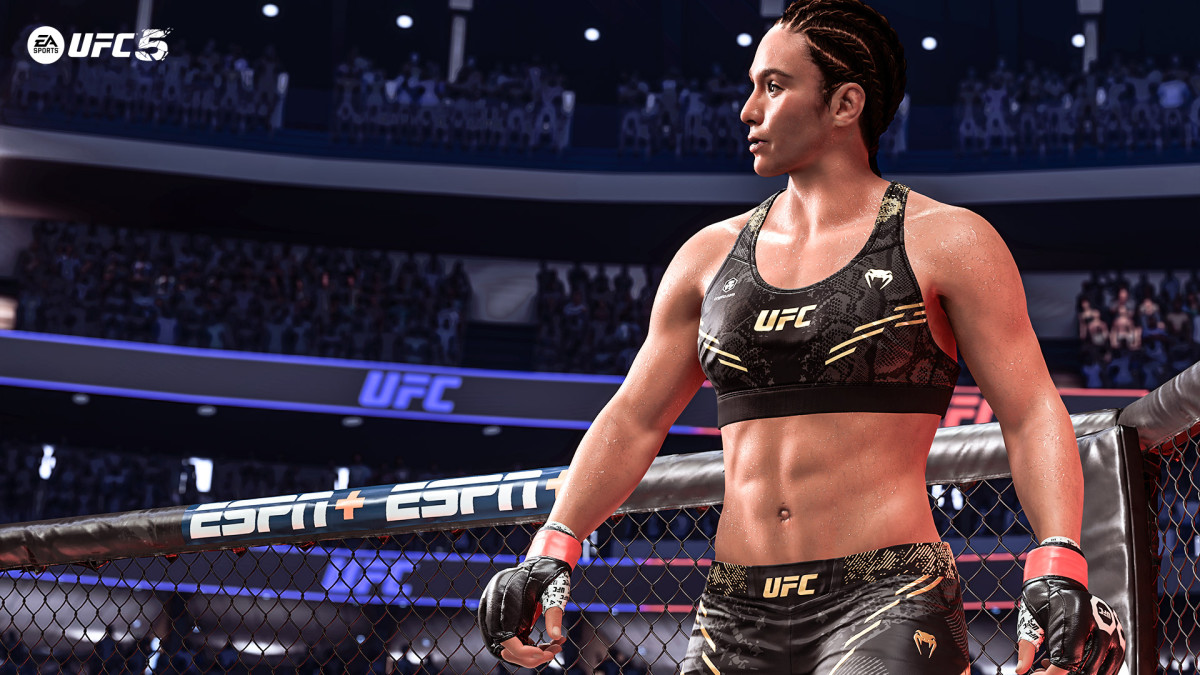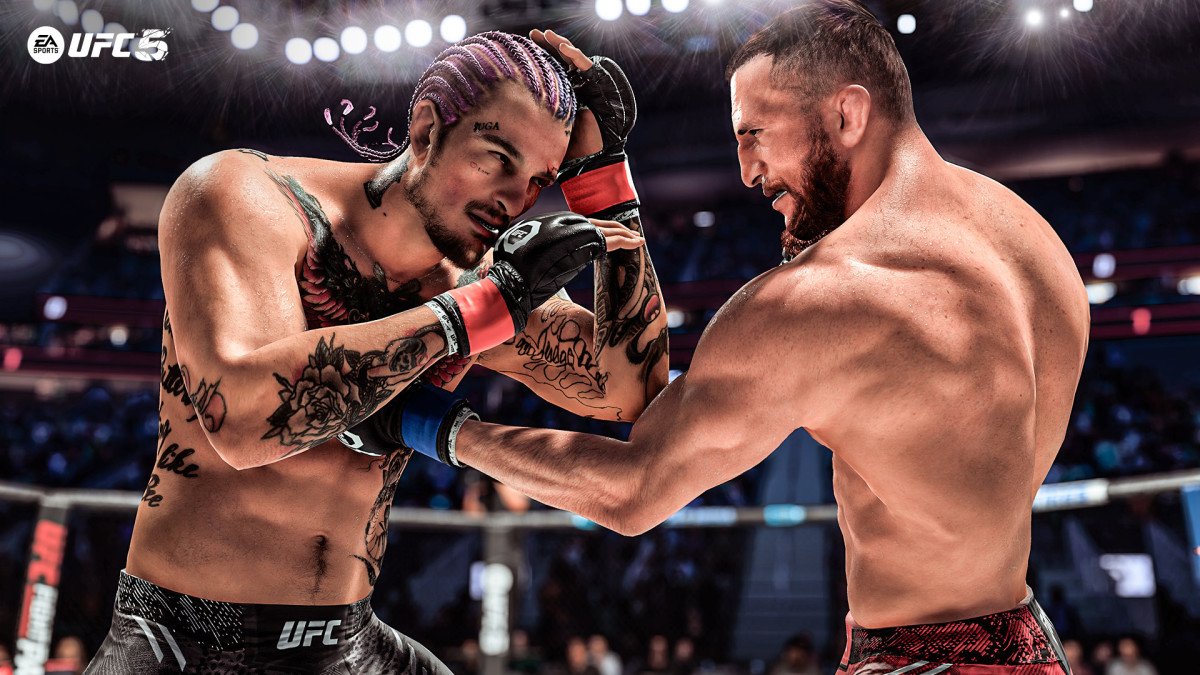EA Sports UFC 5 review: the strongest online MMA game ever released

Every martial art has drills. Whether you’re on your tenth combo on the Muay Thai pads or you’re practicing kata in karate, the principle is the same: repeat the movements until they become instinctual.
I remember my first few months of training Muay Thai. Your natural reaction when someone throws a kick at you is to throw out your hand to try to catch the leg. The problem is, Muay Thai practitioners kick hard, and they kick with their entire shin – it’s like having a baseball bat smacked around your arm.
So, after repeatedly almost breaking your arm, you learn to check the kick instead, bringing your knee up to your elbow and taking the impact on your leg, teaching your opponent that it hurts to kick you and they should probably stop. Give their shin a little “sawatdee krap”.

UFC 5’s career mode tries to ape this training methodology and comes out with mixed results. Your career is split into chunks of time, and you can choose how you spend that time in the run-up to a fight: working with sponsors to hype the event, watching tapes to learn your opponent, learning moves from other fighters, or drilling.
Drilling is where you learn the ropes, much like the real thing. But it’s also where you earn points to spend on increasing your attributes, so you’ll want to spend as much time here as possible.
While it does a good job of keeping the drills fresh and mixing them up with the various disciplines of MMA – wrestling, BJJ, Muay Thai, and boxing – it becomes a hell of a slog once everything is instinctual. Sometimes you’ll get lucky and be able to simulate the drill you’ve already perfected, but you spend more time in training than you do in fights. The same is true for real fighters, but it doesn’t make for a very compelling gameplay loop.

While this is more realistic than throwing you in a bunch of minigames, ironically, sparring in UFC 5 also reminds you often that you’re playing a video game. In real life, you pull your punches when you spar. Here, one of your drills might ask you to land ten hooks to the face, which you do, at full power, before accidentally knocking your sparring partner out and putting them out of action until the next fight.
The actual fights are the best they’ve ever been in an MMA game. I appreciate how your moves evolve the more you land them cleanly. There’s also a big focus on combos this time around, and you’ll learn a whole range of combat-applicable combinations that naturally flow from strike to strike. Add on the fact that chopping away at body and legs is a viable tactic, and it offers up a pretty close approximation of the stand-up game, even down to clinches.
Animations flow into each other naturally, and the system prioritizes the correct strikes if you and your opponent throw at the same time, for the most part. You do still get tangled up from time to time, but it’s impressive when you go for a late takedown and manage to catch an ankle – the game recognizes where you connect and changes the move accordingly. You can even catch kicks if you time your inputs right.

The ground game feels mostly the same as the last game, with players using directional inputs to transition and defend different positions, and stamina playing a big part in who comes out on top in a submission battle. I’d say the only thing that’s lacking a little is the ground and pound, which is effective, but the punches look like they’re being thrown by someone in a dream.
It’s a shame ground punches lack impact because there are some wince-inducing knockouts in the stand-up game. Bones crunch, gashes open up and bleed, and that blood sprays into the air, onto skin, mixing in with sweat when someone’s head is snapped back with a stiff jab. UFC 5 features the best damage modeling in any combat game ever, and fights do sometimes get stopped because of these injuries.

Career mode is strange. It starts out cutscene-heavy, and there’s a cheesy sincerity to the actors’ performances that I don’t dig, but it gives you something to cling to initially at least. It starts you off in a backyard brawl in a homage to the late Kimbo Slice, but that’s gone after one fight and you’re soon in the big leagues. It tries its best to develop rivalries and friendships through social media posts and replies, but it doesn’t capture the drama of the actual sport. This isn’t helped by the fact you can restart any fight without consequence, so losing doesn’t have to be a part of your story. The most excited you will get is at the proposition of punching someone with the word “crypto dot com” on their T-shirt.

Outside of career, there are daily fight contracts where you can take on tough challenges with special rules for free currency, but the meat of the game is online.
Online career sees you create fighters for different divisions and battle it out against other horrific creations online. Initially, you’ll get your head stoved in because you have to earn points to spend on increasing your attributes, but fights are otherwise evenly matched, and the community so far seems fairly honorable, if a little too keen to keep things standing.
If you don’t like getting knocked out 50 times before you have a chance, there’s also ranked mode with famous fighters. Each of these online portions features proper progression, giving you something to aim for, and I can see a real community building up around the game.
UFC 5 is the strongest MMA game ever released, and I’m excited to see where the team takes it online. But if you’re not interested in fighting other players, there’s probably not enough meat in the career mode to fully recommend it right now.
Score: 8/10
- Graphics: 8/10
- Sound: 8/10
- Combat: 9/10
- Story: 6/10
Version tested: Xbox Series X
